Year in Review: Physicians Pick the Biggest News of 2017, in Interventional Cardiology and Beyond
TCTMD journalists asked a range of experts about what developments rocked the field this year—or at least made it tremble. Here’s what they had to say.

In the last few weeks of 2017, the entire TCTMD news team reached out to a range of cardiologists around the world to ask what they see as the biggest studies, the most auspicious advances, or the most conspicuous flops of the year gone by. Here’s what they had to say.
Coronary Artery Disease
No surprise: several of the physicians we spoke with mentioned the ORBITA trial. “Interesting and provocative,” Allen Jeremias, MD (St. Francis Hospital, Roslyn, NY), called the trial results, which have met with robust debate since they were reported at TCT 2017. Jeremias said he would be interested in seeing an analysis of the roughly three-quarters of patients who had abnormal physiology at baseline and who might derive a benefit from PCI.
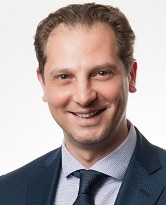
ORBITA was on the list for Andrew Foy, MD (Penn State Hershey Medical Center, PA), as well. “I would have been one of those people that would have hypothesized that a lot of the subjective benefit of PCI would not be present in a sham-controlled trial, but it was great that this trial was able to be done. It really shows that interventions aimed at improving subjective endpoints need to be subject to rigorous study. It would be nice if we would do these studies before the widespread adoption of the service as opposed to after the fact.”
Foy said ORBITA should be a game-changer, but doesn’t think it will be, unfortunately. “At least it gets people thinking though, that when it comes to these things, maybe we should be doing more sham-controlled trials and that it’s not unethical,” he said. “In fact, it’s really helpful.”
While ORBITA seemed to steal the show in the last 2 months of the year, Jeremias argued that the DEFINE-FLAIR and iFR-SWEDEHEART trials, showing that instantaneous wave-free ratio (iFR) was noninferior to fractional flow reserve (FFR) for guiding revascularization decisions in intermediate lesions, were arguably the bigger story in CAD this year. Jeremias said he expects to see a lot of interesting subanalyses in the coming year, but believes the trials have already had an impact.

“I’ve been using both for quite some time, but I’ve spoken to many people and they basically completely abandoned FFR and now switched over to iFR, which I think might be a little bit of a strong statement,” he said. “There’s a role for both but in terms of usability, iFR certainly is more user-friendly. It’s quicker, with less side effects because you don’t have to give adenosine. So it’s a more appealing concept for sure.”
The two iFR/FFR trials also got the nod from Ik-Kyung Jang, MD, PhD (Massachusetts General Hospital, Boston, MA), who told TCTMD that at his center, FFR has been almost completely replaced by iFR. “When those two large trials were done independently and showed almost superimposable data, it was very convincing,” Jang said.
Jeremias said important developments also occurred in the areas of complete revascularization for patients with acute MI complicated by cardiogenic shock (CULPRIT-SHOCK), left main PCI, and bioresorbable scaffolds. The latter weathered its share of alarmist headlines in 2017 and was ultimately taken off the market.
“It’s a disappointment,” Jang said, “but I don’t think it’s dead. I think the better second-generation versions will come shortly.”
Joanna Wykrzykowska, MD (Academic Medical Center, Amsterdam, the Netherlands), said the disappointing results of bioresorbable scaffolds shifted focus back to metallic DES. “When everybody realized . . . that the bioresorbable scaffolds were not ready for prime time and were not going to bring down the risk of stent thrombosis to zero as promised, I think we all started rethinking metallic drug-eluting stents.
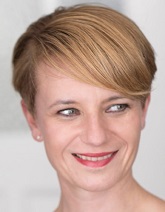
“The question in everybody’s mind,” she said, “is whether or not there are DES platforms where you can afford to reduce DAPT—to decrease the bleeding risk when somebody has to operate or because the patient has a high risk of bleeding—without the additional risk of stent thrombosis. This is the thinking behind a lot of the ongoing trials.”
Wykrzykowska cited several DAPT de-escalation trials as the “big news” of 2017, including CHANGE DAPT and PRAGUE-18.
“We see in clinical practice that people who take ticagrelor have a lot of little nuisance bleeds,” said Wykrzykowska. “Even if they have STEMI or NSTEMI and indications for 1-year of treatment with aspirin and ticagrelor, these studies have shown that it’s okay after a month to switch down to aspirin and Plavix.”
In addition, several ongoing trials will provide important answers with regard to DAPT duration and stent technology, said Wykrzykowska.
Clinical Cardiology and Prevention
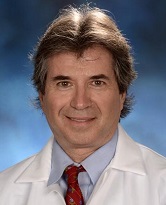
Secondary prevention of CVD saw some of the biggest trials in 2017, including FOURIER and CANTOS. “These results were more robust compared with 2015's IMPROVE-IT trial that used the cholesterol absorption inhibitor ezetimibe (Zetia, Merck/Schering-Plough),” Michael Miller, MD (University of Maryland Medical School, Baltimore, MD), told TCTMD.
With regard to FOURIER, Miller said one aspect of the study that particularly impressed him was the continued benefit of evolocumab (Repatha; Amgen) when on-treatment LDL cholesterol levels were reduced to as low as 10 mg/dL. At these extremely low levels, there was no signal of risk observed, he noted. Alternatively, CANTOS demonstrated support for the inflammatory hypothesis and represented a new means of treatment outside of lowering LDL cholesterol.
Foy, on the other hand, wasn’t as impressed with FOURIER. In fact, what struck him the most was the hubristic thought that adding evolocumab to optimized high-dose statin therapy could abolish the residual risk of cardiovascular events in a secondary-prevention population.
“Sometimes people joke with me that I’m a medical Luddite,” said Foy. “It’s not that I’m against progress, because I’m not, but this study is interesting because evolocumab, more or less, wipes out LDL cholesterol, or at least to very low levels in patients with atherosclerotic cardiovascular disease. Even though the trial was positive, what this shows is that we didn’t do very much.”
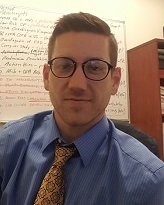
Foy said that even though LDL cholesterol levels were reduced to a median of 30 mg/dL in the trial, more than more than one in 10 patients in both groups experienced the primary efficacy endpoint.
“As a society, do we want to continue to invest heavily in treatment of disease once it already occurs?” asked Foy. “As this trial shows to some extent, we may not have much further to go. . . . Should we declare victory from a medical standpoint and start thinking about how to invest as a society in disease prevention, which gets us away from the doctor’s office and puts resources back into the community?”
While there was a lot of exuberance over FOURIER, investment in primary prevention, with walkable cities and cycling infrastructure, for example, would likely go a lot further than spending billions of dollars for an additional therapy in patients with cardiovascular disease, suggested Foy.
To TCTMD, Khurram Nasir, MD (Baptist Health South Florida, Miami), also cited the FOURIER trial, and like Foy argued that hard decisions need to be made about how much payers are willing to spend for an expensive medical therapy that yields solidly effective, but not miraculous, gains. “The benefit will seem substantial to some and modest to others,” said Nasir. “However, it reignited the debate on issues related to its pricing, cost, and value.”
The American Heart Association (AHA), the American College of Cardiology (ACC), and other societies can play leadership roles to resolve cost-related issues, he added. “Moving forward, rather than debate whether a PCSK9 inhibitor is or is not affordable, we need a conversation about whether it represents value for money,” said Nasir.
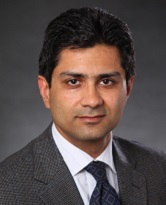
Several experts also pointed to the importance of the new hypertension guidelines from the AHA, ACC, and nine other partnering organizations that redefined hypertension as starting at a blood pressure of 130/80 mm Hg.
“The idea that we should be more aggressive about treating hypertension would be a big change in terms of getting a lot more patients on therapy,” Anne Curtis, MD (University at Buffalo, NY), told TCTMD.
She said she’d still be wary of aiming for aggressively low blood pressure goals in older patients, and wouldn’t, for example, try to get an 85-year-old’s readings down to 120/80 mm Hg. “The reason I say that is that a lot of times they have pretty stiff vessels and once you start trying to get too aggressive in lowering the blood pressure you can have problems with orthostatic hypotension or getting them dizzy.”
Stephen Little, MD (DeBakey Heart & Vascular Center, Houston, TX), also told TCTMD that he was happy to see the renewed antisodium message that came along with the revised guidelines because it “really sort of doubles down” on what physicians in the past have advocated.
“Every month or so we hear about new pharmaceuticals to [lower blood pressure], but it’s nice to see that people have gone back to the basics,” Little said. “It’s not particularly sexy, but in terms of clinical utility, it’s easy . . . not to burden patients with insurance or economic challenges with new therapies” and instead simply place them on a low-salt diet.
Arrhythmias
Curtis told TCTMD that the “coolest thing” this year in the realm of heart rhythm is a small study looking at noninvasive cardiac radiation for ablation of ventricular tachycardia. Though the study included only five patients who had failed other treatments, the approach provided “amazingly good results” by reducing episodes of ventricular tachycardia by 99.9%, Curtis said. “It potentially has a huge amount of promise—it’s going to require a lot more work and they’re doing prospective trials on it—but . . . if you could stop having to use catheters to push around the heart to figure out where to fix these things, it would just be a revolution in the management of these arrhythmias.”
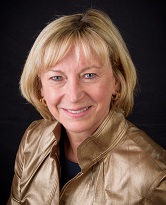
The CASTLE-AF trial was another important development in electrophysiology, said Curtis. The trial randomized patients with heart failure and A-fib to either conventional drug treatment or catheter ablation. The primary endpoint of all-cause death or unplanned hospitalization for worsening heart failure strongly favored the ablation arm.
“There seems to be increasing evidence that when patients have A-fib and heart failure, if you can fix the A-fib, you can improve outcomes,” Curtis said, adding that the trial could have an impact on practice by making clinicians choose ablation earlier in that patient subset.
And finally, Curtis pointed to studies of His-bundle pacing as a major development. With permanent pacemakers, the lead typically goes in the right ventricle, requiring the impulse to travel through myocardium. His-bundle pacing, however, uses a very small lead placed on the septum to recruit the His-Purkinje system to pace the ventricles. That approach has yielded success rates of 85% to 90%, although information on longer-term outcomes is still needed, Curtis said.
Structural Heart Disease
Ted Feldman, MD (NorthShore University HealthSystem, Evanston, IL), said the single biggest thing to move the dial in 2017 is the New England Journal of Medicine’s decision to publish, in a single issue, three randomized trials supporting PFO closure for stroke prevention. “After more than a decade of struggling with trying to convince the noninvasive world that PFO closure prevents recurrent cryptogenic stroke, there’s now no ambiguity. The three trials, RESPECT, CLOSE, and REDUCE, represent significant advances for the field, and most importantly those advances will have a positive impact on patients,” he said.
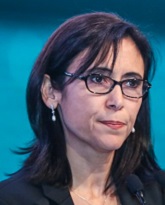
Mayra Guerrero, MD (NorthShore University HealthSystem), similarly placed PFO closure among the top news. “It really got our attention, but it did not surprise me,” she said. “Many of us knew that this would be positive and would just take time.”
Five-year findings from PREVAIL and PROTECT AF on the Watchman LAA closure device (Boston Scientific) also were a “highlight,” Guerrero observed.
Lars G. Svensson, MD, PhD (Cleveland Clinic, OH), told TCTMD that, for his center, the “most striking thing” is performing their first percutaneous tricuspid valve replacement. “We’ve done a number of patients now under compassionate use, and we’re now working with the [US Food and Drug Administration (FDA)] on a feasibility trial,” he said, adding, “That’s the big one for us.”
Moreover, “of course there’s a tremendous number of various devices that have popped up this last year both for the mitral valve and the tricuspid valve,” Svensson noted. “That’s a very exciting area of growth with transcatheter devices over time.”
An incremental advance that continued to be felt this year, Feldman agreed, is the growing momentum of transcatheter mitral valve replacement (TMVR). “We have seen and continue to see small strides being made by a variety of technologies to make the procedures more reproducible, and more often transseptal rather than transapical,” he said. Improvements in imaging have been critical here, he added. “With every endeavor we’ve ever had, imaging has led the way because you can’t go where you can’t see. We’re understanding how to look at those scans better and evaluate all the complexities of the mitral apparatus.”
Guerrero, too, cited early feasibility trials of TMVR, including her own MITRAL study, as well as results with the Tendyne and Intrepid valves. “Compared with other years, I think the common theme is that the findings of the recent trials [show better outcomes] than before with prior devices or prior attempts,” she said, echoing Feldman’s idea that “transseptal is a better way to go whenever possible” in mitral cases.
One milestone, Guerrero said, was the expanded FDA indications for Sapien 3 (Edwards Lifesciences), permitting its use in in mitral valve-in-valve procedures.
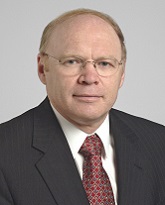
Another intriguing development, Svensson said, is the potential to combine multiple transcatheter devices in the same procedure. For example, the WATCH-TAVR multinational study, just getting underway, is pairing the Watchman device with TAVR for patients who have both A-fib and aortic stenosis. Until recently, it was impossible to formally test these options, Svensson explained, because more than one investigational device cannot be combined in a single trial. Now, as more devices become FDA approved, it’s possible to study the effects of adding a newer contender to an existing therapy, he said.
Regarding the TAVR space, Guerrero said while there was no earth-shattering news, the accumulating trial data on lower-risk patients and initial forays into treating asymptomatic patients has kept the field’s interest. Specifically, the ongoing EARLY TAVR trial is changing clinicians’ perspectives, she commented. “We no longer have to wait for symptoms. We can take those patients with severe aortic stenosis and talk to them about early TAVR” with the hope of easier recovery and lower risk than surgery.
Cardiovascular Imaging
In the realm of cardiovascular imaging, Little told TCTMD that one of the most interesting topics explored in 2017 is the connection between cardiac amyloidosis and aortic stenosis as viewed on a new cardiac nuclear study called technetium pyrophosphate. “The gist of it is that there’s this phenotype of patients that we see with aortic stenosis that we send for TAVR and they have small ventricles, thick hearts, and a lot of diastolic dysfunction and it always gets ascribed to being elderly and having aortic stenosis,” he explained.
But studies this year have shown that amyloidosis is “very common” in those with aortic stenosis, who are often sent to undergo TAVR. At the moment, the data are merely “thought provoking,” Little said, but it’s likely going to lead to a more research given the lack of knowledge regarding the appropriateness of TAVR for these patients.
“One of the hardest things we do in the TAVR environment is deciding who's not going to benefit from the therapy, but if somebody clearly has a burden of cardiac amyloid, then a TAVR is not going to fix that in any way,” he said. “Maybe there should be a discussion around futility and sort of potentially improving patient selection.”

Kevin Harris, MD (Minneapolis Heart Institute Foundation, MN), on the other hand, cited a very recent study that identified myocardial fibrosis in competitive male triathletes. In that study, the scarring detected by late gadolinium enhancement by cardiac magnetic resonance imaging was particularly pronounced in athletes who participated in long-distance events, such as Ironman triathlons.
Additionally, Harris pointed to a recent study that highlighted a subset of patients with hypertrophic cardiomyopathy (HCM) who have left ventricular apical aneurysms.
“It’s an interesting paper and gives us some good insights into a subset of patients with hypertrophic cardiomyopathy who are at a higher than expected risk [for arrhythmic sudden death],” said Harris. Additionally, HCM patients with left ventricular apical aneurysms were also at a higher risk of thromboembolic events.
Finally, Harris also cited a CT imaging study of patients with uncomplicated acute aortic dissection. In that study, imaging-based morphological features were combined into a prediction model to identify patients at high risk for late adverse events after an uncomplicated type B aortic dissection.
Endovascular Disease
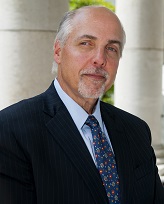
“The biggest trial of the year by far in my opinion was the recently-published ATTRACT trial, which did not hit its primary endpoint,” said Michael R. Jaff, DO (Newton-Wellesley Hospital, Boston, MA). “This was a highly anticipated trial that had been ongoing for many years and it’s a highly controversial area of therapy.”
Jaff also pointed to 12-month results of the ILLUMENATE trial. The low-dose paclitaxel-coated Stellarex balloon (Spectranetics) showed superior safety and efficacy compared with angioplasty alone in a multicenter trial of 300 PAD patients with claudication. Stellarex “became the third to the market as a result of this trial,” Jaff noted. “Overall, it was a very impressive time course from invention to FDA approval.”
Finally, Jaff said the finding that carotid stent fractures are not associated with adverse events, as reported in the ACT I trial, was another important advance in endovascular medicine. “Everybody kind of believed that if you have a stent fracture it results in a higher risk of stroke and death and need for repeat interventions. But it turned out that none of those were the case,” he remarked.
Heart Failure
Among the big news in heart failure this year, Paul Hauptman, MD (Saint Louis University School of Medicine, MO), pointed to the emergence of antidiabetic medications as therapies for reducing cardiovascular risk. In August, liraglutide (Victoza; Novo Nordisk), a glucagon-like peptide-1 receptor agonist, received an indication for reducing risks of MI, stroke, and cardiovascular death in adults with type 2 diabetes and established cardiovascular disease. That follows a similar decision for empagliflozin (Jardiance; Boehringer Ingelheim/Lilly), a sodium glucose cotransporter-2 inhibitor that received an indication at the end of 2016 for reducing the risk of cardiovascular death in adults with type 2 diabetes and established cardiovascular disease.
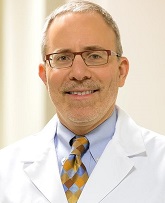
“It used to be thought of as maybe it’s just an issue of safety, but now it looks like . . . some of these drugs actually have favorable effects on the heart,” Hauptman told TCTMD, noting that there has been a resurgence of interest in diabetes in the heart failure community.
He pointed out that two new trials were launched in 2017 to look at use of empagliflozin in patients with heart failure and either preserved ejection fraction (EMPEROR-Preserved) or reduced ejection fraction (EMPEROR-Reduced); patients are not required to have diabetes. “It’s a first attempt now to extend findings from a main diabetes study to see whether or not—in this particular case—empagliflozin could actually be a heart failure drug in addition to being a diabetes drug,” Hauptman said.
Other major developments, he added, were the approval of the HeartMate 3 left ventricular assist device (LVAD), the expanded destination therapy indication for the HeartWare LVAD, promising early study results for a novel drug for symptomatic hypertrophic obstructive cardiomyopathy from MyoKardia and an interatrial shunt from Corvia Medical, and continued refinements of heart failure guidelines.
Policy and Practice
For Frederick Masoudi, MD (University of Colorado Anschutz Medical Campus, Aurora), the biggest news of the year affecting everyone from physicians to patients, and hospitals to insurance companies has been “the fight over the Affordable Care Act,” or ACA. “It seemed like the ACA had nine lives at least at one point, although I think that's probably changed fairly substantially with the new tax legislation that's been approved by both the House and the Senate that eliminates the mandates as part of the ACA.”
Looking back over 2017, he said there were several times when “things were looking pretty good for the ACA despite a lot of attempts to undermine enrollment.” However, the “poor public understanding” of the reasons why it is necessary to maintain both coverage for preexisting conditions as well as mandates and subsidies has contributed to the success of the tax legislation, Masoudi commented, adding, “Certainly what’s happened here at the end of the year is I think bad news for the ACA.”
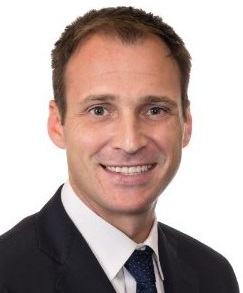
To TCTMD, Christopher Meduri, MD (Piedmont Heart Institute, Atlanta, GA), said one of the overarching themes of 2017 has been the growth of early feasibility studies in the United States.
“If I look back to just a few years, it really seemed like every US interventionalist at any major meeting was watching the revolution in valvular heart disease from the sidelines,” he said. “We always dreamed of being up there doing some of these cases, or being involved with the new technologies. Fortunately, not just for investigators, but also for patients, the FDA has really developed a collaborative atmosphere between sponsors and the sites doing the early feasibility work. Now, more and more technologies are being tested in the US.”
At TCT 2017, for example, there were presentations on several US-based, early feasibility valve-related trials, said Meduri. At his center, he has participated in two early feasibility studies, and at least three more valve-related technologies will be tested in the coming months. His institution has also been invited to participate in the FDA’s early feasibility trial network.
“I remember being a fellow and thinking, ‘You have to go to Europe to do anything.’ So I went to Europe for several months, trying to get my hands on some of these things I’d never get to do otherwise,” said Meduri. “Now, at some of the same places I trained at in Europe, there’s interest in coming over here [to the US] to watch us do things instead. It’s pretty crazy.”
This story was a collaboration by Caitlin E. Cox, L.A. McKeown, Michael O’Riordan, Todd Neale, and Yael L. Maxwell. Did we miss something? Let us know in the Comments section below what we left out, or have your say on Twitter using the hashtag #TopCardio2017.
Shelley Wood is the Editor-in-Chief of TCTMD and the Editorial Director at CRF. She did her undergraduate degree at McGill…
Read Full BioDisclosures
- Jeremias reports receiving institutional support from Philips/Volcano and Abbott Vascular and consulting for Philips/Volcano, Abbott Vascular, Boston Scientific, and Opsens.
- Jang reports receiving educational grants and consulting fees from Abbott.
- Wykrzykowska reports receiving grants/research support from Abbott Vascular and consulting for Abbott Vascular and St. Jude Medical.
- Nasir reports serving on the advisory board for Quest Diagnostics and consulting for Regeneron.
- Curtis reports receiving speaking honoraria from and serving on a data safety monitoring board for Medtronic and serving on the medical advisory board and adjudicating clinical trial results for Abbott (St. Jude Medical).
- Masoudi reports serving as the chief science officer of the National Cardiovascular Data Registry. Guerrero reports receiving research grant support from Edwards Lifesciences, serving as a consultant/speaker for Abbott, and serving on the speaker’s bureau for Boston Scientific.
- Svensson reports being an unpaid member of the executive committee for PARTNER trials I and II, chairman of the PARTNER publication committee, and an unpaid member of the executive committee of the COMMENCE trial, sponsored by Edwards Lifesciences.
- Feldman reports consulting for Abbott, Boston Scientific, Edwards Lifesciences, and Gore.
- Jaff reports consulting for Micell, Primacea, Vactronix, Venarum, and Volcano/Philips.
- Foy, Miller, Little, Harris, and Meduri report no relevant conflicts of interest.


Comments